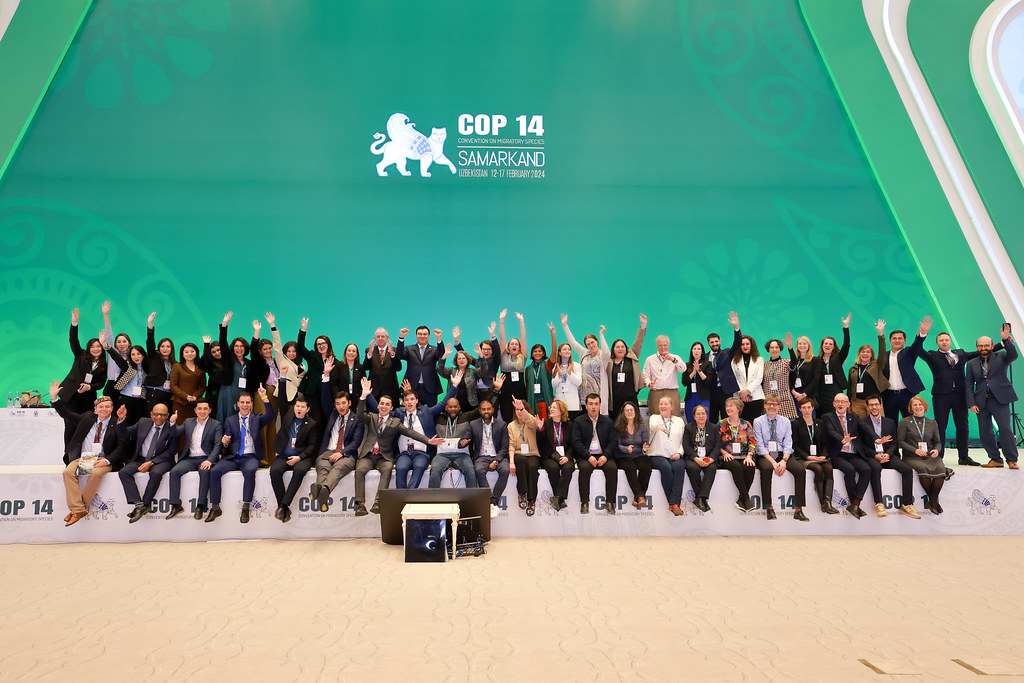Current Context:
The 14th Meeting of the Conference of the Parties (COP14) to the Convention on the Conservation of Migratory Species of Wild Animals concluded in Samarkand, Uzbekistan.
About CMS?
- It is also known as the Bonn Convention and is an environmental pact overseen by the United Nations Environment Programme.
- It serves as a global forum for the protection and sustainable use of migratory species and ecosystems.
- It was signed at Bonn, Germany, on June 23, 1979.
- It is the only worldwide and UN-based intergovernmental agency dedicated only to the protection and management of terrestrial, aquatic, and avian migratory species across their range.
- The convention’s signatories recognize the necessity of protecting migratory species, as well as the need to give special attention to species with an unfavorable conservation status.
- CMS Parties’ activities may include legally binding treaties (known as Agreements) as well as less formal documents such as Memoranda of Understanding.
Key outcomes of COP14 Conference :
- Strengthened resolution on climate change and endorsement of the report on the climate change on migratory wildlife.
- Strengthened measures to address the illegal and unsustainable taking of migratory species.
- Actions to advance ecological connectivity.
- New global guidelines addressing the impacts of light pollution on migratory species.
- Recommendations on addressing linear infrastructure development and impact assessment.
- Endorsement of a new scientific report “Insect Decline and its Threat to Migratory Insectivorous Animal Populations”, and a call for the CMS Scientific Council to develop new guidelines.
- Adoption of a new decision on Wildlife Health encouraging CMS Parties to implement the recommendations of the scientific report ‘Migratory Species and Health: A Review of Migration and Wildlife Disease Dynamics, and the Health of Migratory Species, within the Context of One Health’ also endorsed by the COP.
- A new, science-based Samarkand Strategic Plan for Migratory Species for the period 2024-2032.
Species-specific mandates
- Amendments to CMS Appendices to include fourteen additional species in need of international conservation, such as the Eurasian Lynx, the Pallas’s Cat, Sand Tiger Shark, and the Magellanic Plover.
- New Concerted Actions as priority conservation measures for six species, including the Chimpanzee, the Straw-colored Fruit Bat, and the Blue Shark, and extension of existing Concerted Actions for nine species such as the Giraffe, the Atlantic Humpback Dolphin and the Antipodean Albatross.
Migratory Aquatic species
- New mandate on addressing the impacts of deep-seabed mineral exploitation on migratory species, their prey, and their ecosystems.
- Strengthened mandate on tackling bycatch and aquatic wild meat, a global concern for small cetaceans, sharks, marine turtles and seabirds.
- Three new Action Plans for aquatic species, the Atlantic Humpback Dolphin, the Hawksbill Turtle and the Angelshark.
Migratory Birds
- Agreement on an Initiative for the Central Asian Flyway, which spans 30 Range States, after nearly two decades of inconclusive negotiations. The adopted initiative includes the establishment of a coordinating unit in India with financial support from the Government.
- A new approach agreed to global flyways coordination under the CMS umbrella for CMS and non-CMS parties and partners.
- Expansion and reinforcement of the prevention of illegal killing, taking, and trade of migratory birds with a call for strengthening the recently created Asia-Pacific Intergovernmental Task Force and agreement on the launch of a new Task Force in Southwest Asia, based on the successful model of the Task Force in the Mediterranean region.

